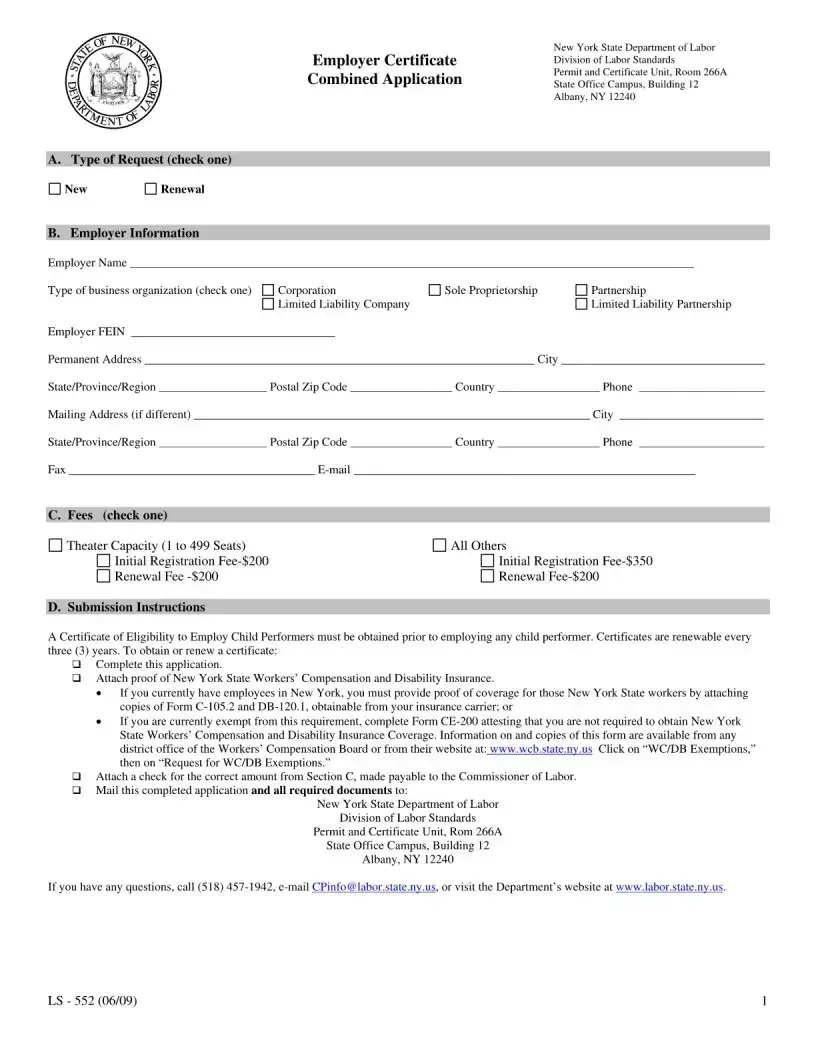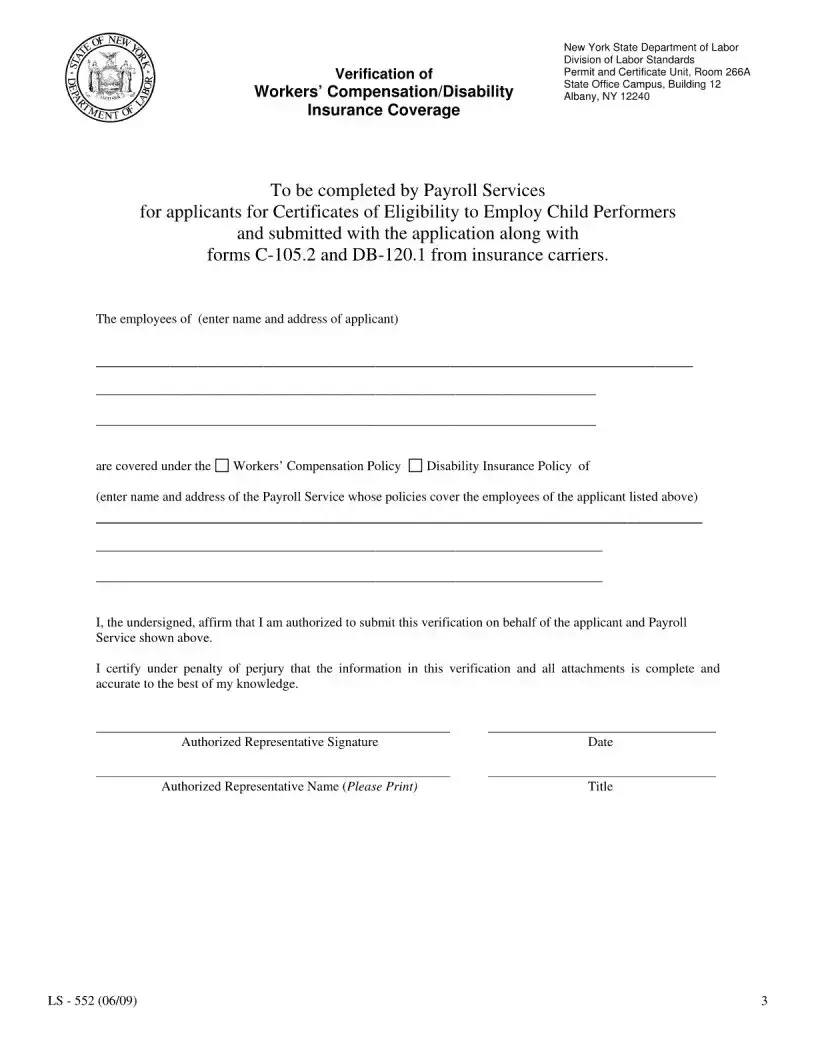In the bustling state of New York, where commerce and labor intertwine, the Ls 552 form stands as a pivotal document for employees and employers alike. This form serves as a critical component in the realm of employment, particularly focusing on wage verification processes that are essential for ensuring correct wage payments and compliance with labor laws. Employers rely on the accurate completion of this form to verify the wages paid to their employees, a task that bears significant importance in maintaining transparent and fair labor practices. The Ls 552 form is not just a mere document but a testament to the state's commitment to upholding the rights of workers and fostering a healthy employment environment. By meticulously detailing wages, hours worked, and other pertinent information, it aids in the prevention of wage disputes and fortifies the trust between employers and employees. The importance of this form echoes throughout the corridors of businesses across New York, making it an indispensable tool in the pursuit of labor rights protection and the overarching goal of workplace harmony.


